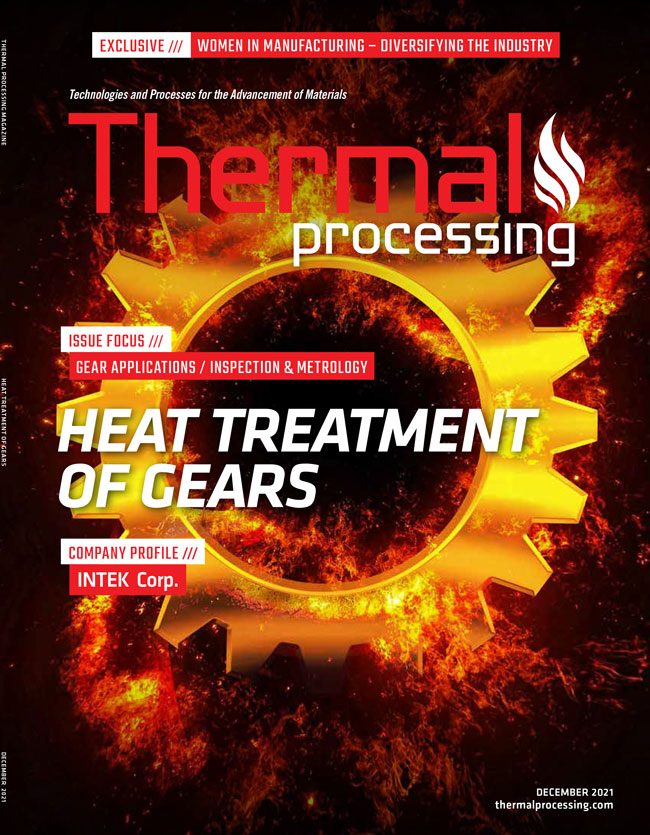
Resolving conflict among purchase order requirements, drawings, and regulatory requirements can be quite the task when accepting contracts for heat treatment. Unfortunately, it happens more often than we would like. If your company is in the AMS/ NADCAP sector as my company is, the ramifications for overlooking these conflicts can be very damaging not only for any upcoming audit, but for the confidence of your customers in your ability to produce conforming heat-treatment processes.
Although I am speaking from the lens of a NADCAP processor, these problems are applicable to commercial work as well. Often the customer is unaware of these conflicts — they do what is required by following their flow-down requirements to provide all the documentation needed to the heat treater. I can’t speak for everyone, but I think most quality departments are always happy to get as much documentation as we can. However, extra documentation can open the door to conflicting requirements. These conflicts can lead to extra communication with your customer, which in turn can force your customer into extra communication with their customer (depending on how far down the supply chain goes), and the trickle down keeps going until the OEM/end user is involved to resolve a conflicting requirement. It doesn’t always happen like this, but it can, and I have gone down this route many times. Undoubtedly, this puts some pressure on heat treaters to navigate the documents during contract review and locate language that directs them to certain requirements, specifications, or exclusions.
This article will focus on the dangers of overlooking contract review and how to mitigate conflicts between documents.
We’ve all seen this before at one point in our careers regardless whether it’s commercial or AMS/NADCAP work. It’s probably something you see weekly or even daily. A PO comes in with requirements clearly defined, and a drawing attached has conflicting language or requirements. Or, in another situation, a PO comes in with a referenced specification to process to, and there is a conflict between PO and specification requirements. What happens when this situation occurs? Some quality representatives will say the PO is the superseding document, and others will say the drawing is the superseding document. The same can be said for PO requirements that conflict with specification requirements. This may sound a bit strange to some readers, but in my opinion, there is no right or wrong way to mitigate this issue. It all depends on how your own quality system works — what your procedures direct you to do in these situations, and how much risk you are willing to put on your company.
I prefer to stick to the conservative route when addressing these issues. What does “conservative” mean? In my case, I want to document all the issues and put them in writing either on the PO or through written correspondence rather than verbally accepting changes or overlooking issues that are significant or even insignificant to the process. If there is any conflict between documents, I prefer to make sure that our customers are aware of why changes need to be made and to make certain that we are following the requirements that allow us to give quality heat treatment.
 How do you accomplish this? The answer is simple because it is usually the easiest and most efficient way of closing all the gaps that concern you: Document everything. If there is a conflict between the drawing and PO, have it identified on the PO with the customer accepting a deviation or acceptance of a conflicting requirement. The same can be said when a specification is referenced: Document it. Get the deviations or acceptance documented on the PO.
How do you accomplish this? The answer is simple because it is usually the easiest and most efficient way of closing all the gaps that concern you: Document everything. If there is a conflict between the drawing and PO, have it identified on the PO with the customer accepting a deviation or acceptance of a conflicting requirement. The same can be said when a specification is referenced: Document it. Get the deviations or acceptance documented on the PO.
An example among many that can occur could be a PO calling for 17-4 CRES material and heat treat in accordance with (IAW) AMS 2759/3J to H-1050 condition, which is in the range of 32-38 HRC. Then you review the drawing and see that the “H” condition is not specified, but instead you see 31-38 HRC is requested IAW AMS 2759/3J. There is a conflict between the PO and the drawing because, although you can technically meet the HRC requirement by heat treating to H-1050 (as long as your lowest hardness reading is above 31 HRC), the range that is specified on the drawing is calling for H-1075 condition based on the hardness range documented in AMS 2759/3J. Being mindful of this conflict, and using my conservative approach, I would want a revised PO to call out the correct condition before accepting this. Big conflict or small, I don’t have a filter in this sense. It’s either correct or it’s not. Some would argue it’s stubborn, not industry practice, or not conducive to reaching OTD goals because extra communication will slow the process. I don’t care.
For my company, process conformance, NADCAP accreditation, company accreditations, and audit performance take precedence over any OTD goal set. Again, everyone has their company’s interests at heart when making these choices. It’s up to you to decide what is more important. For me, I would prefer to have conforming product and not get an audit finding on something that was an easy fix with a little communication.
I can almost hear readers asking, “What happens if my customer understands the conflict but is unwilling to change their PO?” As I have alluded to earlier in the article, every company has their own quality system and chooses what is best for them. That said, there may be more than one option at your disposal. Speaking for my company, we would reject the job and send it back. Based on experience, often a customer will change their tune once you tell them you won’t process for them unless the conflicts are addressed. Your customer can’t force you to do anything your company is not comfortable doing. I have done this before, will have to do it again, and know that my CEO understands and supports my stance on this. The choice is ultimately yours, but make sure you are supported in your decision making.
What could go wrong if you don’t address these conflicts? There are several things that could go wrong and too many to name. But, in my opinion, there are two things that matter the most. The first thing is your customer. If you fail to mitigate conflicts between documents, you have the potential to process non-conforming product for your customer, delay customer lead time, diminish confidence in your company, and erode their relationship with their customers. The second thing is your own audit and the potential to leave yourself vulnerable to audit findings. Objective evidence is the name of the game when going through an audit, and when you fail to provide this in the form of documentation, you have failed in providing the evidence that you have identified and addressed these conflicting requirements. I know for certain no one wants these things to happen.
There is no right or wrong answer to address the issue of conflicting documents. This is not a one-size-fits-all solution, and there are instances where it would need to be handled on a case-by-case basis. For me, one thing is empirical — documenting any conflicts can be applied and benefit any quality system. I have seen a great deal during my time as quality director, but two things I’ve never encountered were a customer complaining about Byington Steel’s thoroughness when performing contract review, or an auditor telling us we have too much documentation supporting our processes.
We plan to keep it that way.


























